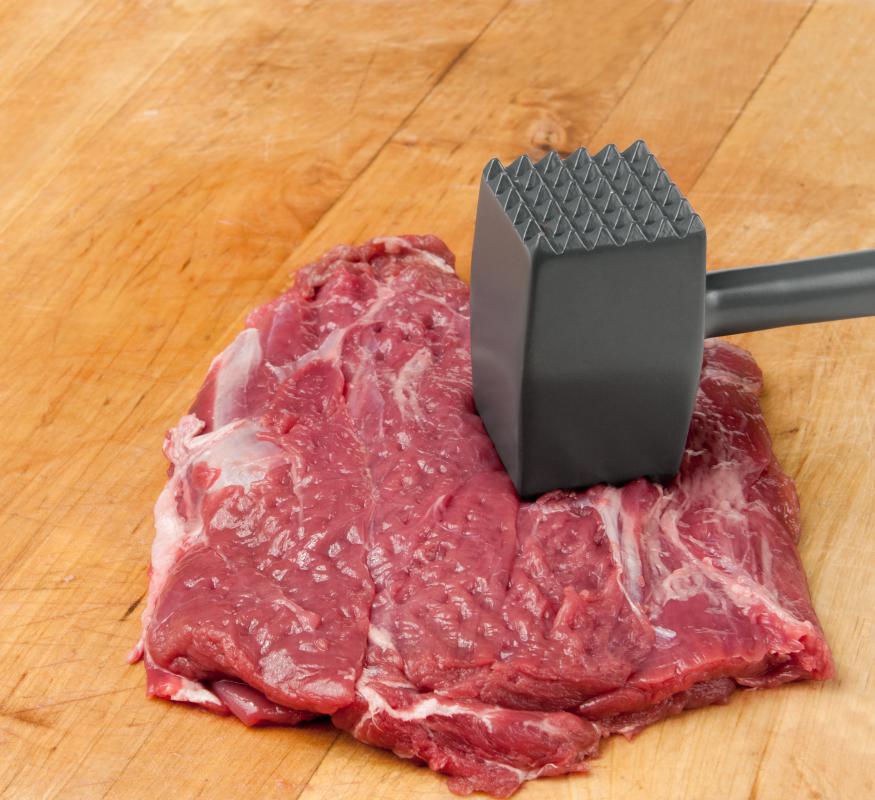At WiseGEEK, we're committed to delivering accurate, trustworthy information. Our expert-authored content is rigorously fact-checked and sourced from credible authorities. Discover how we uphold the highest standards in providing you with reliable knowledge.
What is the Beef Industry?
The beef industry primarily consists of ranchers who raise cattle as a food source and the processors who prepare beef for the retail and wholesale market. Other industries that directly or indirectly support and regulate the beef industry include grain producers that supply feed to ranchers and feedlots, government oversight of the industry such as the United States Department of Agriculture (USDA), and the veterinarian services that ensure the health of cattle herds. One of the largest agricultural industries, it is estimated that, in 2010, there are 1.3 billion cattle worldwide and that anywhere from 24% - 60% of arable grassland, depending on the nation, is set aside to raise them.
Global beef producers that lead in the export market include the United States, Argentina, Australia, Brazil, Canada, New Zealand, the European Union, Russia, and Ukraine. As of 2010, together they account for almost 6 million metric tons of beef exports annually, up from about 5 million tons of exports in 1994. Oddly enough, many of the largest exporters in the beef industry also import as much or more from foreign suppliers as well. The United States, European Union, and Russia regularly import more beef than they export, making Australia the second largest net exporter of beef after Brazil.

Several criticisms of the cattle industry on a global scale center around the intensive use of natural resources to raise beef when more economic food production is possible. It is estimated in the United States, for instance, that, as of 2011, 70-80% of all grain produced, largely corn, goes to beef production. At the same time, half of all the fresh drinking water pumped from wells in the US is used to grow grain for cattle feed. Growing wheat for human consumption as opposed to cattle consumes only one percent as much water, and the beef industry requires 18 times more energy than growing an equivalent amount of grain such as wheat or corn.

Raising cattle is no doubt an energy and resource intensive business, yet global demand continues to rise as rapidly growing economies such as China's boost the demand for meat on the international market. Trading on the United States Chicago Mercantile Exchange has seen cattle futures reach all time highs since they were added to the trading list in 1964. This continues despite increasing grain prices worldwide, and the fact that the beef industy in the US has a cattle herd size that is the smallest since 1958.

Part of the reason for smaller herds is that cattle research has raised the amount of beef per cow from around 400 pounds (181.44 kg) in the 1960s to a range of 580 pounds (263.08 kg) or more per cow in 2005. Exports in the beef industry continue to grow to accommodate this increasing demand, with US beef exports jumping 19% in 2010 alone and Australia's rise in exports close behind at 13%.
AS FEATURED ON:
AS FEATURED ON:
















Discuss this Article
Post your comments